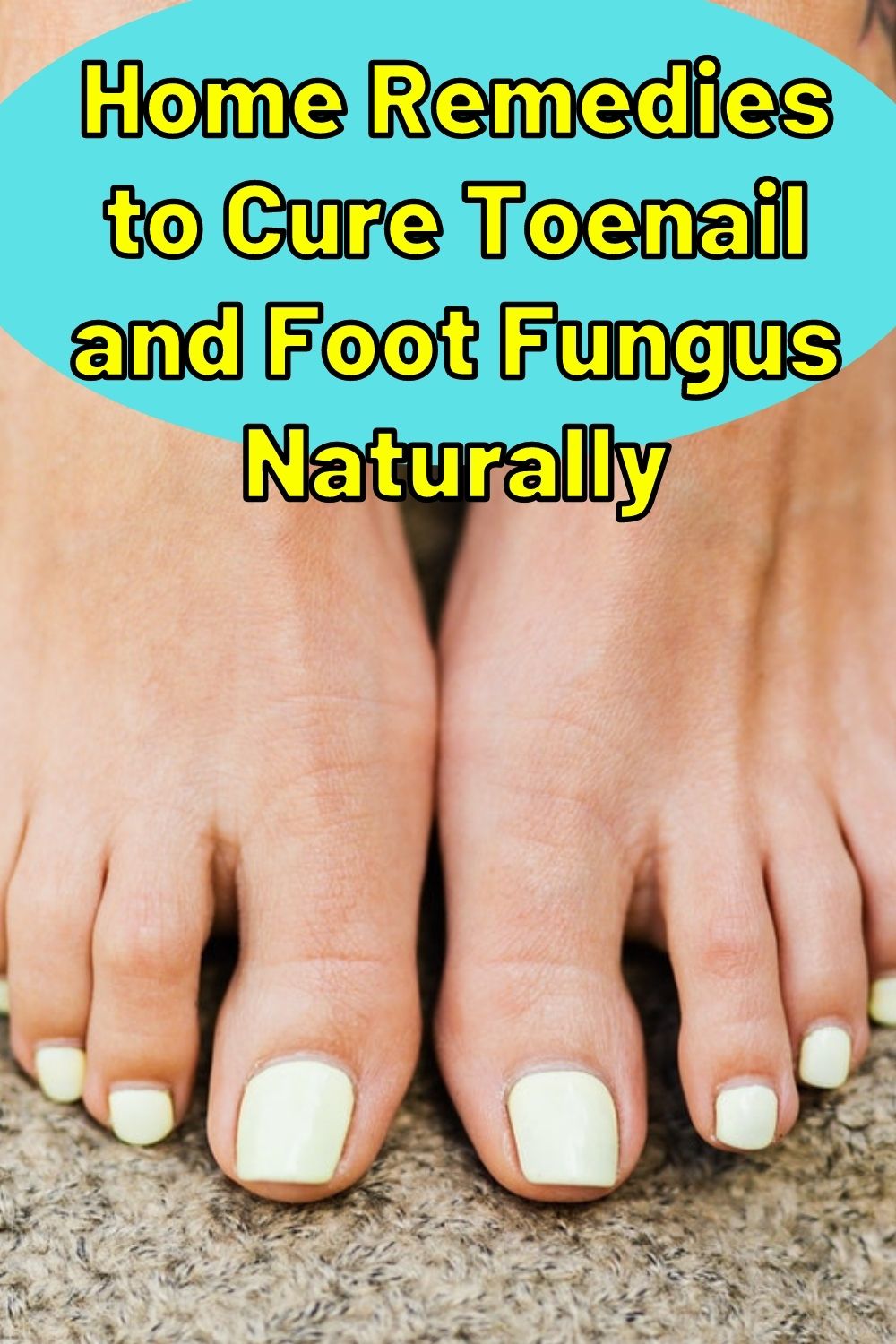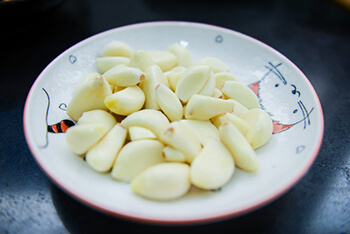Toenail and foot fungus is a common issue that can be both embarrassing and difficult to deal with. What starts as just a small yellow or white mark on the nail can grow and damage the nail.
Fungal infections can be picked up in wet areas, like swimming pools, locker rooms, or communal showers. It's important to determine the cause of your infections before you can pick a suitable home treatment for the nail fungus.
Causes and Types of Foot and Toenail Fungus
Some of the most common causes and types of foot and toenail fungus are listed below.
Yeasts and Molds
Most fungal infections are caused by yeasts and molds. When the nail or nail bed is damaged, it makes it easier for yeast and mold to enter and begin a fungal infection.
When nail damage is exposed to moist environments such as sweaty socks, poorly ventilated footwear, or prolonged exposure to water, the fungus can thrive and grow quickly.
Athlete's Foot
Athlete's foot is a common fungal infection of the foot. It can be identified by the white patches between the toes that are scaly and itchy. You may also notice peeling of the skin, blisters, and toenails that pull away from the bed with this infection.
Athlete's foot usually occurs after walking barefoot in public spaces, especially on wet floors that spread bacteria such as those in locker rooms, pools, and showers. It can also be caused or spread by sharing socks, having sweaty feet, or wearing tight closed-toe shoes.
Onychomycosis

There are many different types of onychomycosis. Streaks in the nail, white spots near the cuticle, nail thickening and splitting, discoloration, and debris under the nail are all signs of Onychomycosis.
Let's look in more detail at the different types of onychomycosis, and the symptoms they present.
White Superficial Fungus
White superficial onychomycosis is a type of fungus that only affects the surface of the toenail. It can be identified by its white spots. If left untreated, the nail can become powdery and sustain damage. White superficial onychomycosis typically only infects toenails.
Proximal Subungual Onychomycosis
Proximal subungual onychomycosis is a rarer form of fungal infection of the nail. It's identified by a white blotch that starts near the nail cuticle in the middle of the nail.
As time progresses, the toenail fungus spreads outwards. Note that proximal subungual onychomycosis is rare, because it typically only affects people with autoimmune diseases, such as HIV.
Distal or Lateral Onychomycosis
Distal or lateral onychomycosis is typically caused by a dermatophyte, a fungus that feeds on keratin. This fungus can be found in the nails, but can also spread to the hair.
As a superficial infection, distal or lateral onychomycosis is spread from person to person, through soil or even by animals.
Candidal Onychomycosis
Candid onychomycosis is a fungal infection caused by yeast, and affects damaged nails. With this type of infection, it's common for the nail to swell and even come off.
Again, candidal onychomycosis is rare, and is is more common in people who have diabetes, HIV, or vascular diseases, or people who are on immunosuppressants.

How To Treat Toenail and Foot Fungus Naturally
There are many home remedies for toenail fungus. If it's caught early enough, preventative measures and home remedies can help treat nail fungus.
Vinegar

Judging by anecdotal evidence online, vinegar has the potential to help with toenail fungus, but there have been very few studies to prove its effectiveness, so take this one with a pinch of salt.
To use vinegar as a toenail fungus treatment, add a cup of apple cider vinegar to a large bucket or basin, then fill the rest with water to create a foot bath. Submerge your entire foot in the basin and soak for twenty minutes. Repeat as necessary.
Baking Soda
Baking soda doesn't actually treat fungus, but it can help prevent toenail fungus as well as stop its spread.
Garlic

Garlic and garlic oil has antifungal effects on the nail. While putting garlic on your feet probably doesn't sound too pleasant, studies show that it can help treat toenail fungus and prevent further growth.
Essential Oils and Natural Oils
Some essential oils have antifungal properties that may help with fungal infections, and many of these oils are effective natural remedies that can treat other foot issues as well.
You're not limited to essential oils, either - other natural oils such as olive, oregano, and coconut oil may also help treat toenail fungus.
Let's take a look at some of the best natural and essential oils for treating fungal nail infections.
Olive Oil and Sunflower Oil
Sunflower and olive oil can help treat toenail fungus for a unique reason: they contain ozone gas. Ozonized sunflower oil and olive oil help deliver oxygen to the affected nails and kill the fungus living under the nail.
To use these oils as a fungus treatment, just use a cotton swab or ball and apply the oil to the nail. Repeat as needed.
Coconut Oil

Coconut oil has antifungal properties that may help kill toenail fungus.
This is due to the oil's fatty acids, which help break up toenail fungus. To try this remedy, simply apply coconut oil to the affected toenail using gloves. Make sure that the oil gets under the nail, and apply it generously. Rinse and repeat as necessary.
Essential Oils
Fungal nail infections can be treated with a variety of essential oils, listed below.
To use essential oils as natural remedies for toenail fungus, add a few drops of the oil to a carrier oil, such as sunflower or coconut oil. Apply this to the foot with a cotton ball and repeat as needed.
Tea Tree Oil
Tea tree oil is one of the best toenail fungus treatments, thanks to its anti-inflammatory, anti-bacterial, and anti-fungal properties. Make sure to use tea tree oil sparingly and with a carrier oil to prevent poor skin reactions, as it is incredibly potent in its pure form.
Lavender Oil
Lavender oil has antifungal properties that may help with toenail fungus. Mix the oil with coconut oil and apply it to the infected nail.
Cinnamon Oil

Cinnamon oil is great for treating toenail fungus and foot fungus. It works especially well when the fungal infection is yeast-based.
Eucalyptus Oil
Eucalyptus oil is another known antifungal agent, and also acts as an effective anti-bacterial and anti-viral, making it ideal for treating a fungus-affected nail.
Oregano Oil

Oregano oil contains thymol, which has anti-bacterial and anti-fungal properties. Studies have found oregano oil to be a powerful anti-fungal treatment as it can stop the infection from growing.
This oil is especially effective in treating athlete's foot and ringworm. Use a few drops of oregano oil mixed with a carrier oil and apply with a cotton ball to the affected area until the infection has cleared.
Lifestyle Changes
Once you get rid of your toenail fungus, you want to make it as difficult as possible for it to return. Different lifestyle changes may prevent future nail infections or stop the spread of current infections.
First off, don't go barefoot in public. Wearing shoes in wet spaces such as pools, locker rooms, and communal showers is particularly important for preventing prevent fungus from entering a damaged nail and starting an infection.

Nail polish blocks light from the fingers and toes and can help fungus thrive. It can also cover the appearance of the fungus, allowing it to grow unnoticed. If you have a toenail fungus, be sure to remove all nail polish and don't reapply until it has gone.
It goes without saying that you should keep your feet clean and your nails trimmed to a short length. If you think you have a damaged nail, make an effort to keep the nail and skin surrounding clean. You can do this with a foot soak or use home remedies to help.
Wear shoes that allow the foot to breathe or socks that are sweat-wicking to prevent moisture buildup near the foot. Making these changes can help prevent nail fungus from growing or prevent it from spreading further.
If you live in an area with a warm climate, be sure to keep your feet as dry as possible, and keep them cool to prevent sweat and bacteria from pooling around the foot.
Conclusion
It's worth using home remedies for toenail fungus to an infection before resorting to expensive over-the-counter medication. Using essential oils with anti-fungal properties can help treat the damage and ward off future infections. Oils like olive and sunflower help deliver oxygen to the fungus, preventing further growth. These oils are safe to use and can be easily applied to the affected nail.
Apple cider vinegar or essential oils can also be used in a foot soak to treat the nail and the skin surrounding. Home remedies such as baking soda are also great for preventing the infection in the first place.
When dealing with fungus, remember to keep your nails dry and clean to prevent further skin infections. Wear easy-to-wash shower shoes when visiting pools, gyms, and locker rooms and be sure to begin treating your nails as soon as you notice a white or yellow spot forming. With these tips, you should be able to eliminate your fungal infection entirely, and deter it from returning in the future.

